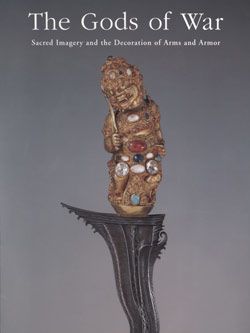Kris Stand
Not on view
After Arjuna, Bhīma is the most famous of the five Pāndava brothers, all of whom remain familiar figures in Indonesian popular culture. Bhīma is seen here in the form of a carved-wood kris stand. the respect with which krises were always treated extended to the careful attention given to them even when they were not being worn. The weapons were stored in fitted bags, custom-made boxes and chests, and on wall-mounted display boards, as well as in kris stands. The use of three-dimensional sculptures as kris stands, however, was limited to the islands of Bali and Lombok.
Bhīma is renowned equally for his great strength and for his unbridled ferocity on the battlefield. Although he is a great hero like Arjuna, he altogether lacks his brother's refined qualities. Their contrasting personalities are made clear by the way Bhīma's physical characteristics differ from those of Arjuna, revealed by a comparison of the kris hilt also in the Metropolitan Museum's collection (acc. no. 36.25.1265) and this kris stand. Bhīma is invariably burly and stocky, his legs set in a wide ungraceful stance. Arjuna, however, is always shown as slender and long limbed. The wild ferocity symbolized by Bhīma's large, bulging eyes is diametrically opposed to the classic beauty and gentility represented by Arjuna's narrow, elongated eyes. In the same way, Bhīma's broad nose is a sign of his coarseness. However, his noble status, like Arjuna's, is conveyed by his hairstyle and the ornaments behind his ears.
Bhīma's other distinguishing features are his long, talonlike thumbnails (panchanaka) and the sacred garment (kain poleng) worn about his waist. Only Bhīma and his half brother, the monkey general Hanumān (famous for his role in the Rāmāyana), share the panchanaka with the wind god, Batara Bayu, whose spiritual sons or incarnations they are. The panchanaka serve Bhīma as terrible weapons with which he rends his opponents to pieces, especially in the Bratayuda, the final battle of the great war with the Kauravas. The kain poleng, likewise an attribute of Hanumān, is sometimes checked in colors representing Bhīma's emotional travails. The gesture made by Bhīma's left hand is also symbolic; a variation of the mustimudrā, it has several connotations, including that of holding a mace or club, which probably refers to the iron club that is Bhīma's characteristic weapon.
This image cannot be enlarged, viewed at full screen, or downloaded.
This artwork is meant to be viewed from right to left. Scroll left to view more.


